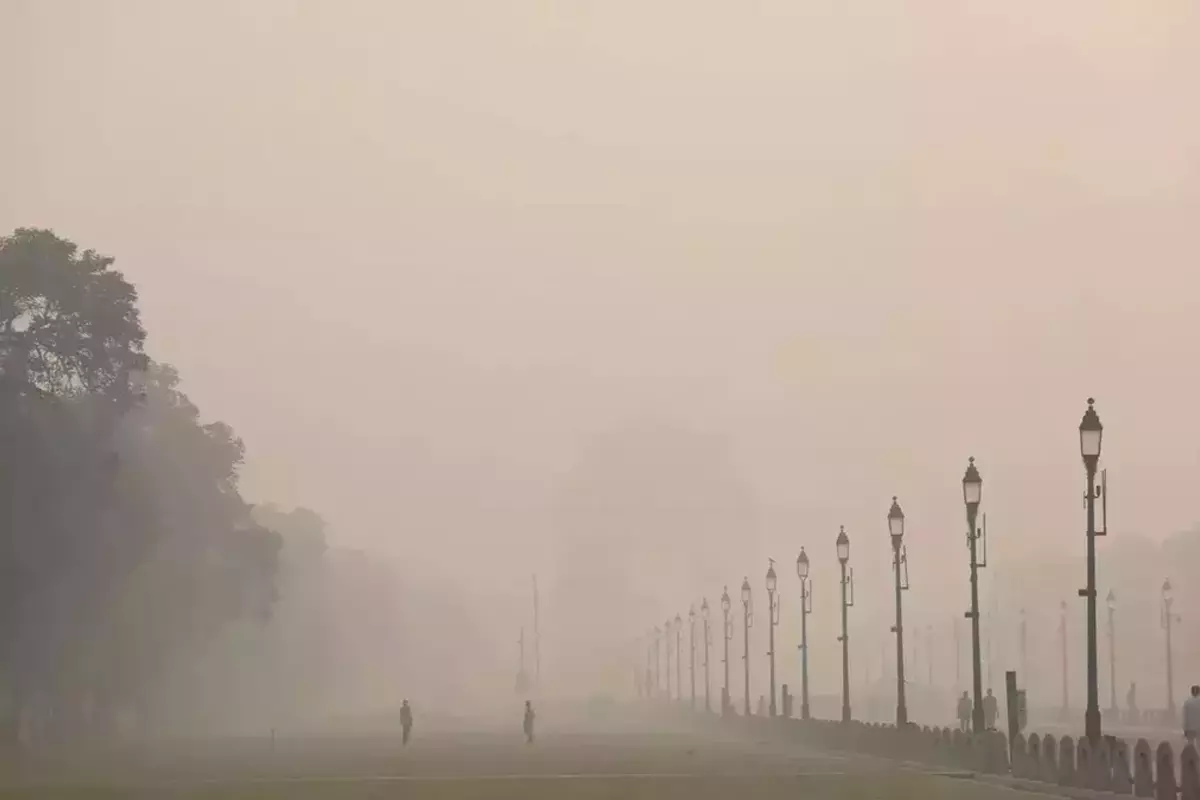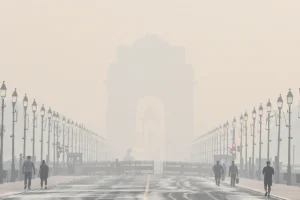
On Saturday, the national capital’s air quality was still classified as “very poor.” At 4 pm, the Central Pollution Control Board (CPCB) reported that the average air quality index (AQI) was 304.
At 12 p.m., the city’s AQI was reported at 301, which represents a decline from Friday’s reading of 261.
The AQI was 201 in Pusa and 316 in the Delhi University region, respectively, placing them in the bad category. The AQI was 276 in the vicinity of IIT Delhi. Similarly, on Saturday, Delhi’s Mathura Road had an AQI of 165, placing it in the moderate category, while Airport (T3) was in the ‘bad’ category with an AQI of 293.
The AQI in Noida was 286 around 4 o’clock in the afternoon, signifying “poor” air quality. Conversely, Gurugram recorded an AQI of 252. According to data from the CBCB states, other cities like Ghaziabad and Faridabad also had AQI values of 291 and 272, respectively.
Generally speaking, an Air Quality Index (AQI) of zero to fifty is classified as “good,” 51 to one hundred is classified as “satisfactory,” 101 to 200 is classified as “moderate,” 201 to 300 is classified as “poor,” 301 to 400 is classified as “very poor,” and 401 to 500 is classified as “severe.”
The most recent information about pollution in the nation’s capital is provided here.
Also read: Government is boosting jobs in both established and emerging industries: PM Modi
1. As part of a series of pollution control efforts, the New Delhi Municipal Council has hired eight anti-smog guns and deployed mechanical road sweepers. Vice Chair of the NDMC Satish Upadhyay unveiled a comprehensive plan of action for “Air Pollution Control” for the years 2023–2024. “We recognise the urgent need to prioritise environmental well-being as air pollution, a significant contributor to respiratory diseases, heart conditions, and cancer, demands our collective attention,” Upadhyay stated.
2. According to Delhi Environment Minister Gopal Rai, there have been fewer stubble-burning instances reported in adjacent states this year than there were last, and it is anticipated that farm fires will contribute less to the city’s overall air pollution generally. He did, however, issue a warning that unfavorable weather patterns could lead to an increase in air pollution in the upcoming days.
3. No updates have been provided by the Ministry of Earth Sciences’ System of Air Quality and Weather Forecasting and Research, and related officials are not aware of the reason. This system gave data regarding the amount of smoke from farm fires that contribute to Delhi’s air pollution. “We are not aware of why updates on the SAFAR portal have stopped,” an official at the Indian Institute of Tropical Meteorology, which operates the website, was quoted
Also read: Government is boosting jobs in both established and emerging industries: PM Modi
4. A nine-day “Yamuna Yatra” foot march was initiated by a number of the city’s organizations on Saturday in an effort to raise public and official awareness of the pollution of the Yamuna River. The Yamuna Sansad chairperson, Ravi Shankar Tiwari, stated that the march, which began at Chhat Ghat near ITO here, would travel 180 km before ending in Mathura on November 5.
5. Slow nighttime wind speeds and a drop in temperature caused Delhi’s air quality to worsen to the ‘ very poor’ level, according to the Center’s Air Quality Early Warning System. It stated that until the end of the month, the air quality is anticipated to stay extremely low.
To read more such news, download Bharat Express news apps


















